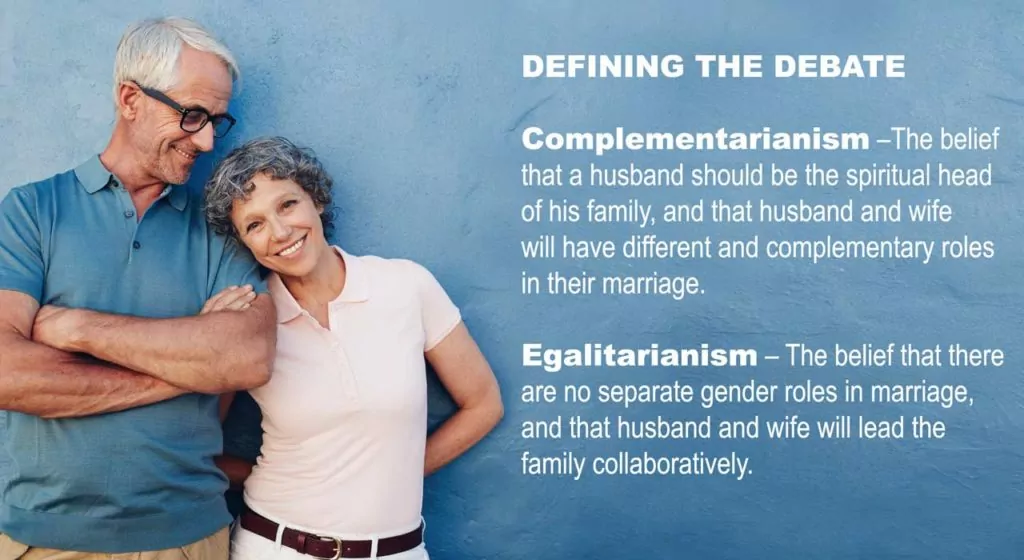Maybe I have been looking in all the wrong places, but in my ten years of being a Christian, I seem to have heard an awful lot more on the subject of wives being in subjection to their husbands than I have on the subject of husbands loving their wives. In the interests of redressing the balance, I wish to focus on the other side of the marriage bond.
Love before submission
One of the first things to notice about Paul’s teaching on marriage is that although he mentions wives before husbands in both the Ephesians 5 and Colossians 3 passages, the onus is clearly on the men to act first. Husbands are told to:
…love your wives, just as Christ also loved the church and gave Himself for her (Eph. 5:25).
Elsewhere in Scripture we are explicitly told the order of Christ/church relations: “We love Him because He first loved us” (1 John 4:19).
So if the husband/wife relationship is to look anything like the Christ/church relationship, it is very much the responsibility of the husband to first ensure he is loving his wife before he starts worrying about whether his wife is submitting to him.
Sacrificial headship
In Ephesians 5:22-24 we read a passage that many a man loves for all the wrong reasons.
Wives, be subject to your own husbands, as to the Lord. For the husband is the head of the wife, as Christ also is the head of the church, He Himself being the Savior of the body. But as the church is subject to Christ, so also the wives ought to be to their husbands in everything.
Some husbands, while properly recognizing that this passage is about headship, conveniently ignore the fact that it is about sacrificial headship. Their thinking goes something like this: “Christ commands his church, right? And his church is meant to be in subjection, right? That’s what Paul says, isn’t it? So if the marriage relationship is meant to be like the relationship between Christ and his church, then clearly I get to decide everything and you must obediently follow.”
There are two big problems with this type of blockhead masculinity.
The first is that although Christ commands His church and His church is called upon to submit to Him, He commands her as a sinless, spotless head. Which means that all of his commands are made in love, righteousness, and truth, and that nothing he has commanded to his church is dictatorial, and that nothing he asks his bride to do is necessarily grievous. Sure, the church disobeys and acts like these things are grievous, but that is because the church is stuffed with sinners, not because her Husband is in the wrong.
The second big problem with this way of thinking, is that even Christ – though He had every right to just command and expect submission – had to die sacrificially in order to win His bride. His headship is not one of mere headship – I command and you obey – but rather a headship that is born of giving Himself, at great personal cost, for the bride that He loves.
Any husband who just commands and expects submission is therefore wronging his wife in expecting her to obey whilst he himself fails to obey the command directed to him. He is failing to understand the import of Paul’s command, which is not to just assume headship, but to assume it in a self-denying and sacrificial way.
Four different dances
I tend to think that what Paul has in mind is something akin to a dance. Now in any really good male/female dance that I’ve ever seen, the man leads and the woman follows. Yet the man does so in a way which is firm and masculine, rather than authoritarian, and the woman follows in a way that is neither overbearing on the one hand nor a pushover on the other, but rather firm in a feminine way.
But let’s just play around with this analogy and see what happens when we add various factors into it. Picture the scene: a husband and wife are about to begin a dance upon a high stage with no barriers surrounding it, set to a Strauss waltz.
1) The modern couple
Now into this scene steps the modern couple. The way they do this “marriage dance” looks, shall we say, a little different to what Paul had in mind. Instead of a graceful scene of husband and wife dancing in unison, with the man gently but firmly leading his wife while she gracefully and willingly accompanies him, many modern marriages look like the two spouses just doing their own thing on separate corners of the stage. Maybe he’s making one last attempt over here to perfect his breakdance technique before middle-age sets in, while she’s over there doing her twerking thing. The two of them are utterly independent of each other, and it is no surprise when they split, citing irreconcilable differences. And poor Strauss carries on in the background, treated in much the same way as that beautiful gold ring on the end of the pig’s snout.
2) The feminist dance
Then there is the feminist dance. You know, where the powerhouse woman tries to lead the man around and he either willingly submits and the dance ends up looking plain silly, or he resists and they end up pushing each other over the edge.
3) The apathetics
Or there is dance of the “apathetics.” This is where the performers are so floppy and without backbone, especially the man, that you wonder whether they are actually trying to dance or to do a distinctly underwhelming impression of two octopi skulking across the sea bed.
4) The cro-magnon
But what of the over-bearing, authoritarian, she-ought-to-submit-to-me-because-that’s-what-Paul-says dance couple? What does their dance look like? It looks like a man dragging his wife rather than leading her, and then when he starts veering too far toward the edge of the stage and his wife tries to pull him back from the brink, he gets mad, accuses her of not being submissive, and carries on doing his thing until they both fall over the edge. Such a guy thinks he’s doing what God commands, yet is in far more danger of disobeying Paul than his wife is.
The dance done right
So what will the kind of dance envisaged by Paul really look like? As with a beautiful waltz to a bit of Strauss, it will look like the man leading his bride gracefully but firmly around the stage, with his wife gladly following his lead. It will look like him making sure he does nothing to grieve her or put either her or the both of them in jeopardy. So he will not only be aware of his steps, but will be aware of her steps too, and of both their steps together. If he happens to wander too near the edge and his wife gently pulls him back, he will not accuse her of being unsubmissive, but rather will accept the reproof and adjust his ways accordingly.
In practical terms, there is no thought in this type of dance of a man commanding his wife regardless of her feelings and opinions, and her being expected to just submit to everything he says. Rather the thought is that the kind of man Paul is thinking of will always take his wife’s desires and opinions into account. If there is disagreement about a decision that needs to be taken, yes it is ultimately the man who is called upon to make that decision and the wife who is called upon to submit. But if the man has not first spoken to his wife, sought her opinion, taken it into account, considered whether maybe she is right and he wrong and that perhaps he needs to die to self before making the decision – unless he has gone through those steps – he is not leading his wife in the dance the way Paul says he ought.
Conclusion
Now, this piece doesn’t address difficulties and problems, such as, “what if a woman is married to a husband who is a blockhead. How far should she go in obeying him?” That’s really not an easy question. Suffice it to say that when Paul teaches headship in Colossians 3, his command for wives to “submit to your own husbands, as is fitting in the Lord” suggests that this is by no means an open check, and that there are limits to her submission, as when Abigail didn’t just go along with her fool of a husband, Nabal.
However, difficult as these questions are, a good place to start in addressing such issues would be for more and clearer teaching on the role of men. This is the surest way of warding off problems and creating the beautiful marriage dance envisaged by Jesus Christ, the true sacrificial head.
“So husbands ought to love their own wives as their own bodies; he who loves his wife loves himself” (Ephesians 5:28).
Rob Slane is the author of “A Christian & an Unbeliever Discuss: Life, the Universe & Everything” which is available at Amazon.ca here and Amazon.com here. This first appeared in the January 2016 issue which you can download here.












